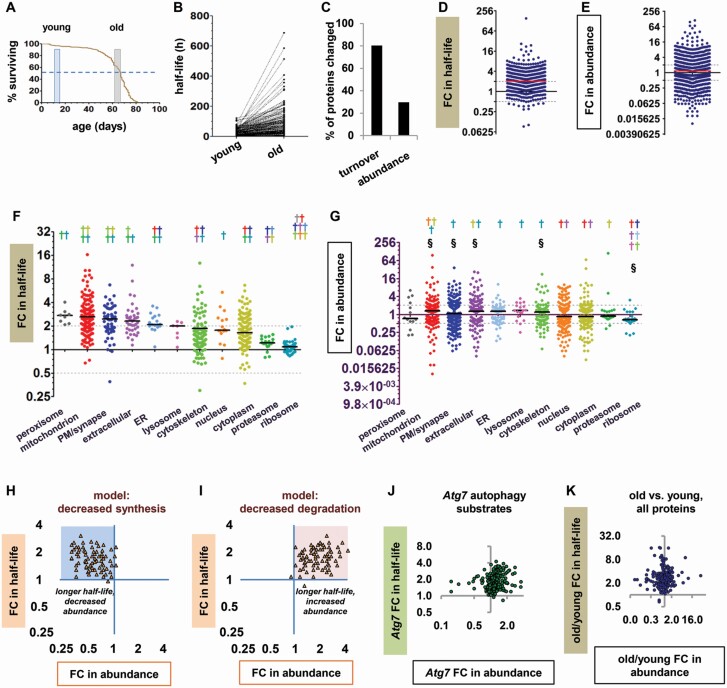Figure 1.
Protein turnover slows in old flies due to protein-specific changes in synthesis or degradation. (A) Life span of the male w1118 flies used in this study. Shaded windows represent the ages of the young and old flies at the time of harvest. Dashed line represents 50% survival. (B) Before–after plot showing half-lives in hours (h) of all proteins detected in young and old flies. (C) Percentages of fly head proteins significantly changed in turnover or abundance. (D) Fold change (FC) in half-life for all proteins in old versus young flies. FC > 1 indicates slower turnover in old flies than in young flies, and FC < 1 indicates faster turnover in old flies. In this and subsequent panels, solid horizontal line = median; gray dashed lines = 2-fold and 0.5-fold change. (E) FC in abundance for proteins in old versus young flies. Dot plots of abundance show only proteins significantly different between old and young flies. (F and G) FC in half-life (F) and abundance (G) for proteins from different cellular components. Each colored dagger (†) symbol indicates a significant difference from the group with the matching dot color (Kruskal–Wallis test with Dunn post-tests). In panel F, all protein groups have significantly longer half-lives in old than in young flies by nested analysis of variance (p < .05). (H and I) Theoretical models of the proteostasis effects caused by (H) decreased synthesis and (I) decreased degradation. FC in half-life is plotted against FC in abundance for individual model proteins. (H) Blue shading highlights theoretical data points with slower turnover and decreased abundance. (I) Pink shading highlights theoretical data points with slower turnover and increased abundance. (J) FC in half-life versus FC in abundance for autophagy substrate proteins in autophagy-deficient Atg7 mutants. (K) FC in half-life versus FC in abundance for all head proteins in old versus young flies. Among the proteins with significantly longer half-lives, 182 were significantly decreased in abundance and 197 were significantly increased in abundance.

